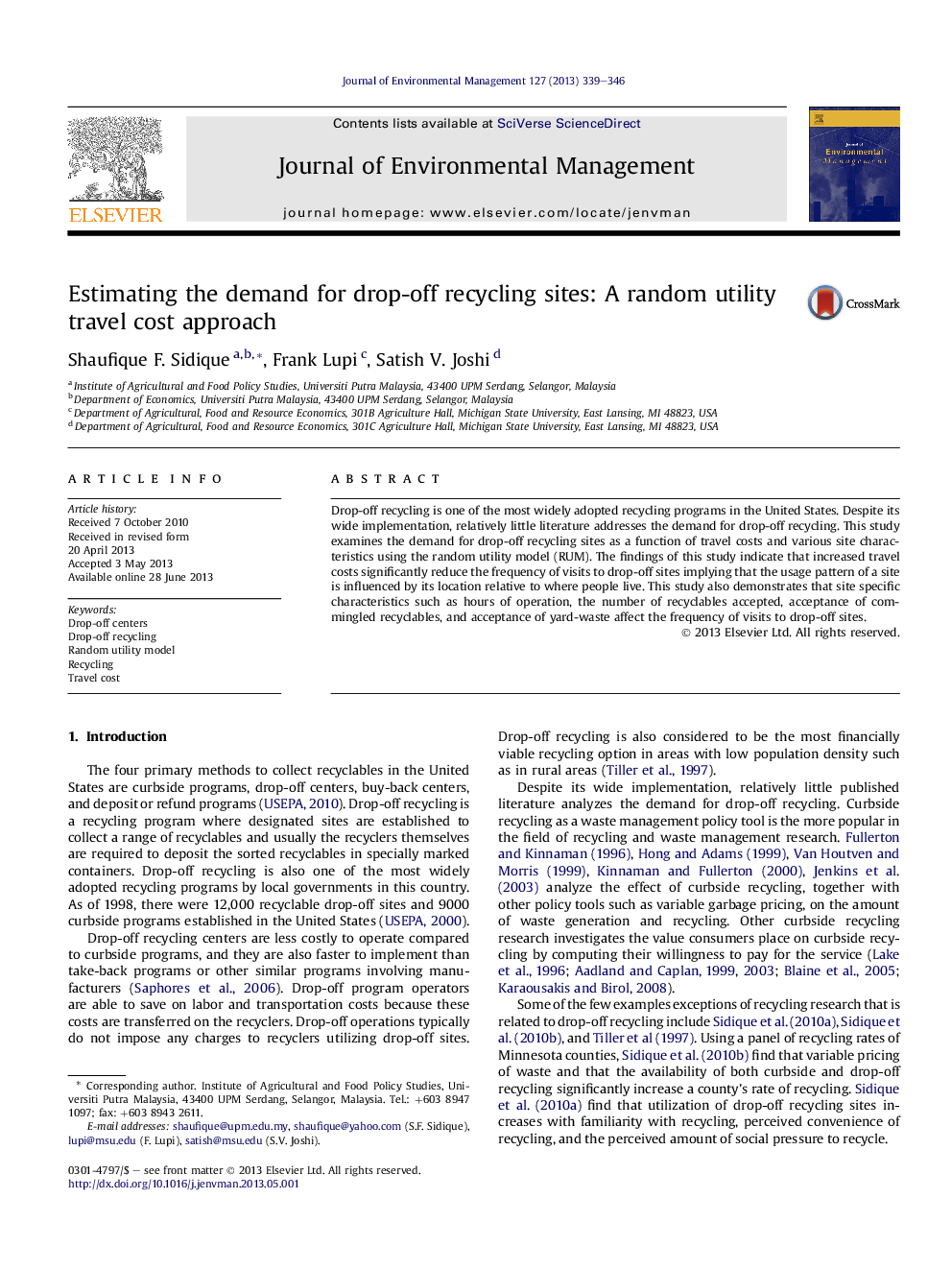| کد مقاله | کد نشریه | سال انتشار | مقاله انگلیسی | نسخه تمام متن |
|---|---|---|---|---|
| 1056039 | 1485285 | 2013 | 8 صفحه PDF | دانلود رایگان |

• We examine the demand for drop-off recycling sites using the random utility model.
• Usage pattern of a site is influenced by its location relative to where people live.
• Visits frequency is influenced by site attributes.
• Site traits such as acceptance of commingled and yard-waste increase site visits.
Drop-off recycling is one of the most widely adopted recycling programs in the United States. Despite its wide implementation, relatively little literature addresses the demand for drop-off recycling. This study examines the demand for drop-off recycling sites as a function of travel costs and various site characteristics using the random utility model (RUM). The findings of this study indicate that increased travel costs significantly reduce the frequency of visits to drop-off sites implying that the usage pattern of a site is influenced by its location relative to where people live. This study also demonstrates that site specific characteristics such as hours of operation, the number of recyclables accepted, acceptance of commingled recyclables, and acceptance of yard-waste affect the frequency of visits to drop-off sites.
Journal: Journal of Environmental Management - Volume 127, 30 September 2013, Pages 339–346